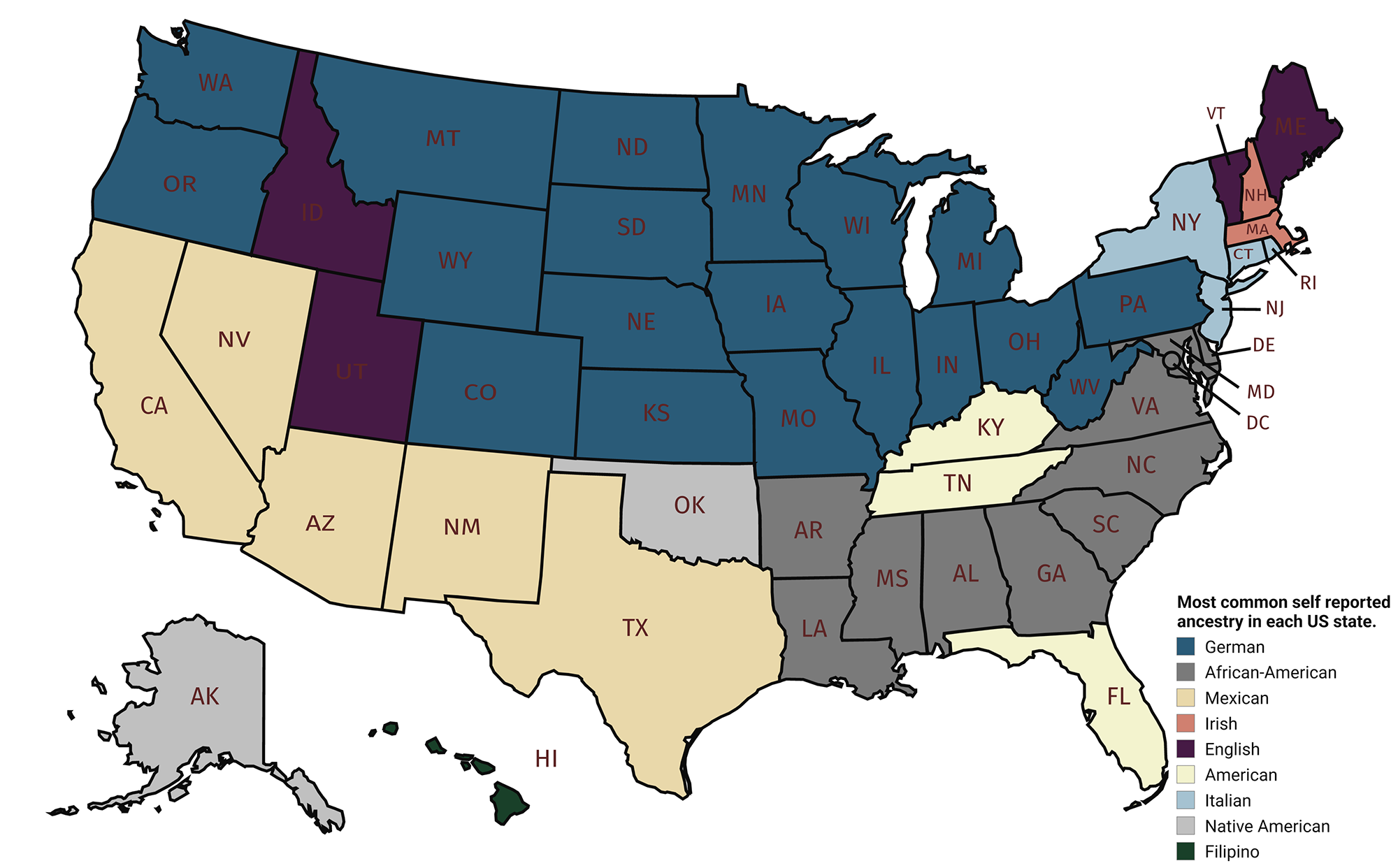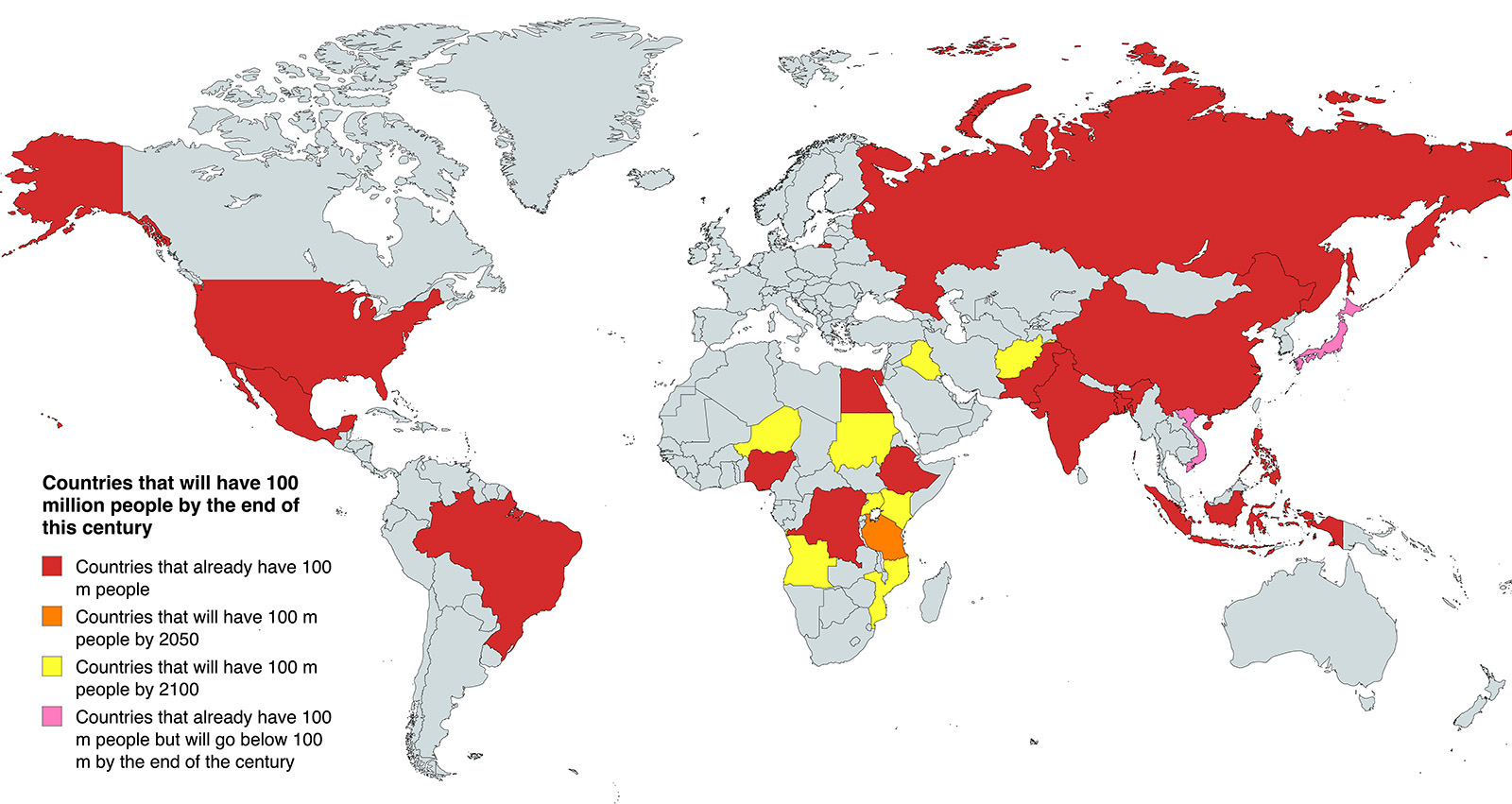Mapping immigrant America
The U.S. has more immigrants than any other nation in the world. According to the United States Census Bureau’s American Community Survey data for 2020, approximately 44.9 million foreign-born individuals live in the United States. The immigrant population nowadays estimates nearly 14% of the U.S. population, almost triple the share in 1970.
The immigrants population is also very diverse, with just about every nation in the world represented among U.S. newcomers.
Over time, the composition of dominant ethnic groups in the United States has shifted. For instance, in the 19th and early 20th centuries, European immigrants, primarily from countries like Germany, Ireland, Italy, and Eastern Europe, formed significant portions of the population. Today, the U.S. has become more racially and ethnically diverse, with Hispanic, Asian, and African American populations growing in size and influence.
The miniature atlas of maps below shows the foreign-born population in the United States, both the most common and the second and third most common country of birth.
The foreign-born population in the United States
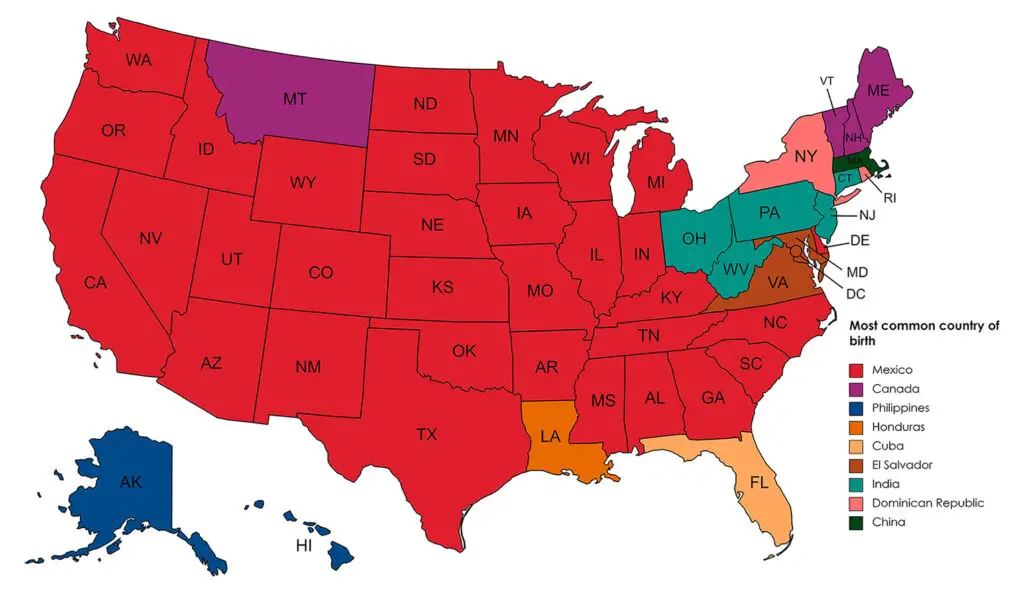
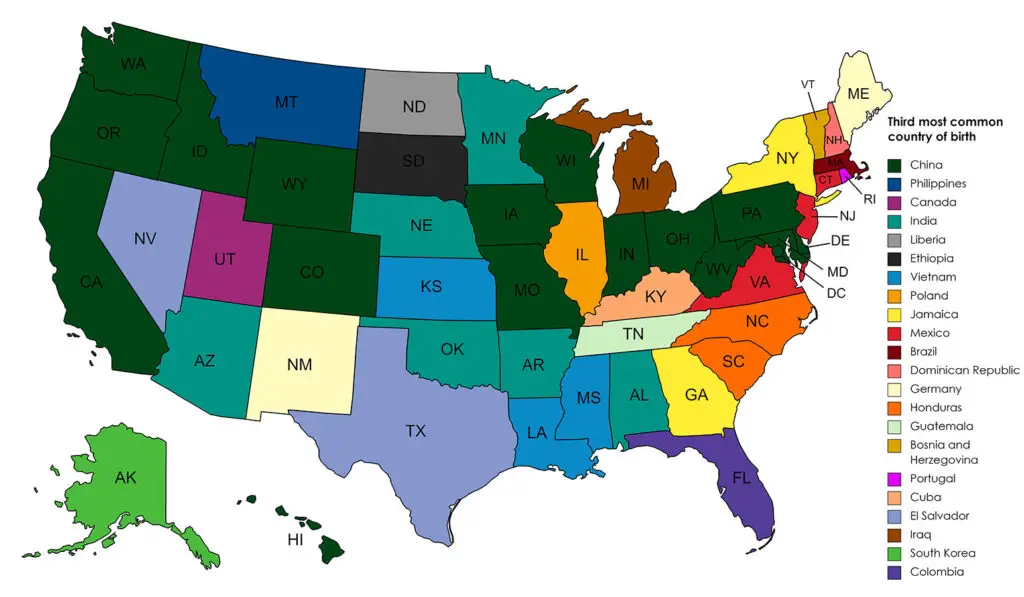
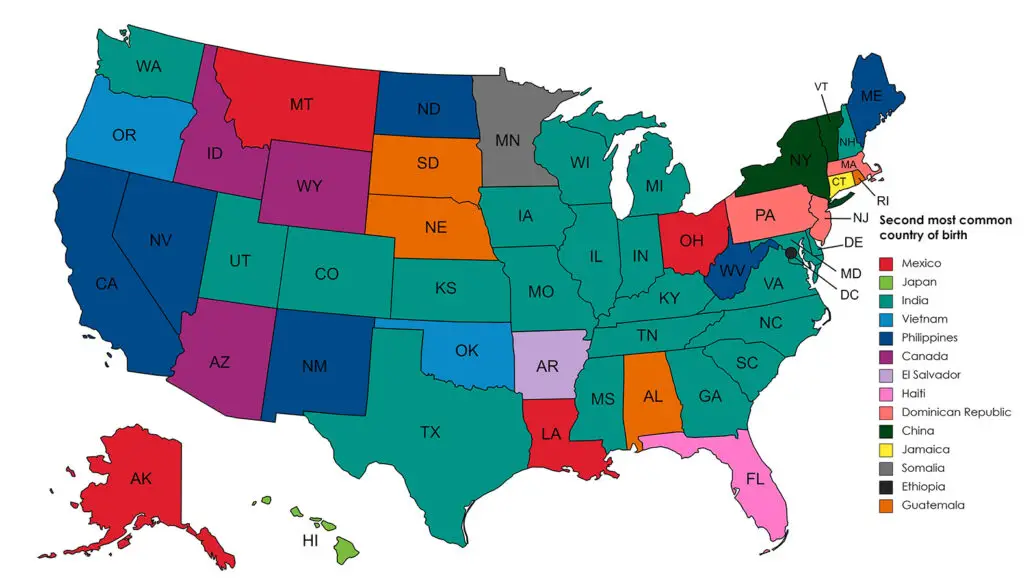
Mexico has historically been the country with the largest number of immigrants coming to the United States. According to the Pew Research Center’s estimates, based on 2021 data, people of Mexican origin accounted for nearly 60% (or about 37.2 million people) of the nation’s overall Hispanic population.
The map below shows the percentage of each U.S. State’s population born in Mexico.
Percent of the population born in Mexico
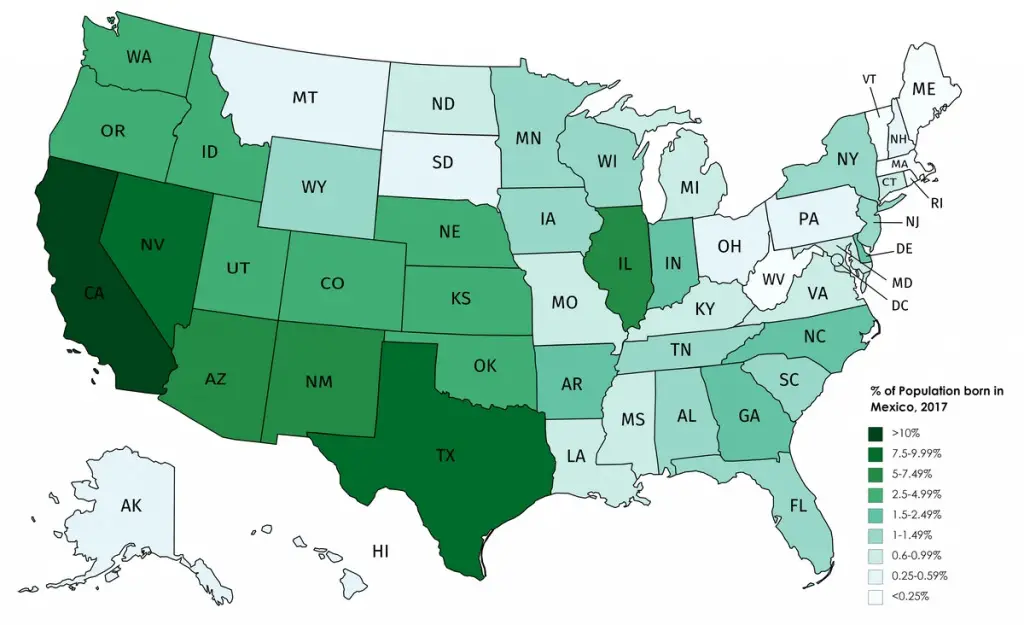
Intermarriage between different ethnic and racial groups has increased in the United States, leading to the growth of multiracial and multiethnic populations. This trend has contributed to a blurring of traditional ethnic boundaries and the emergence of individuals and communities identifying with multiple backgrounds.
Immigrant groups and their descendants often undergo processes of assimilation and acculturation, adopting aspects of American culture while also maintaining elements of their heritage. Over time, this can lead to the blending of cultural practices and the creation of distinct cultural expressions within American society.
If you’d like to learn more about ethnic groups in the U.S. have a look at the following materials:



